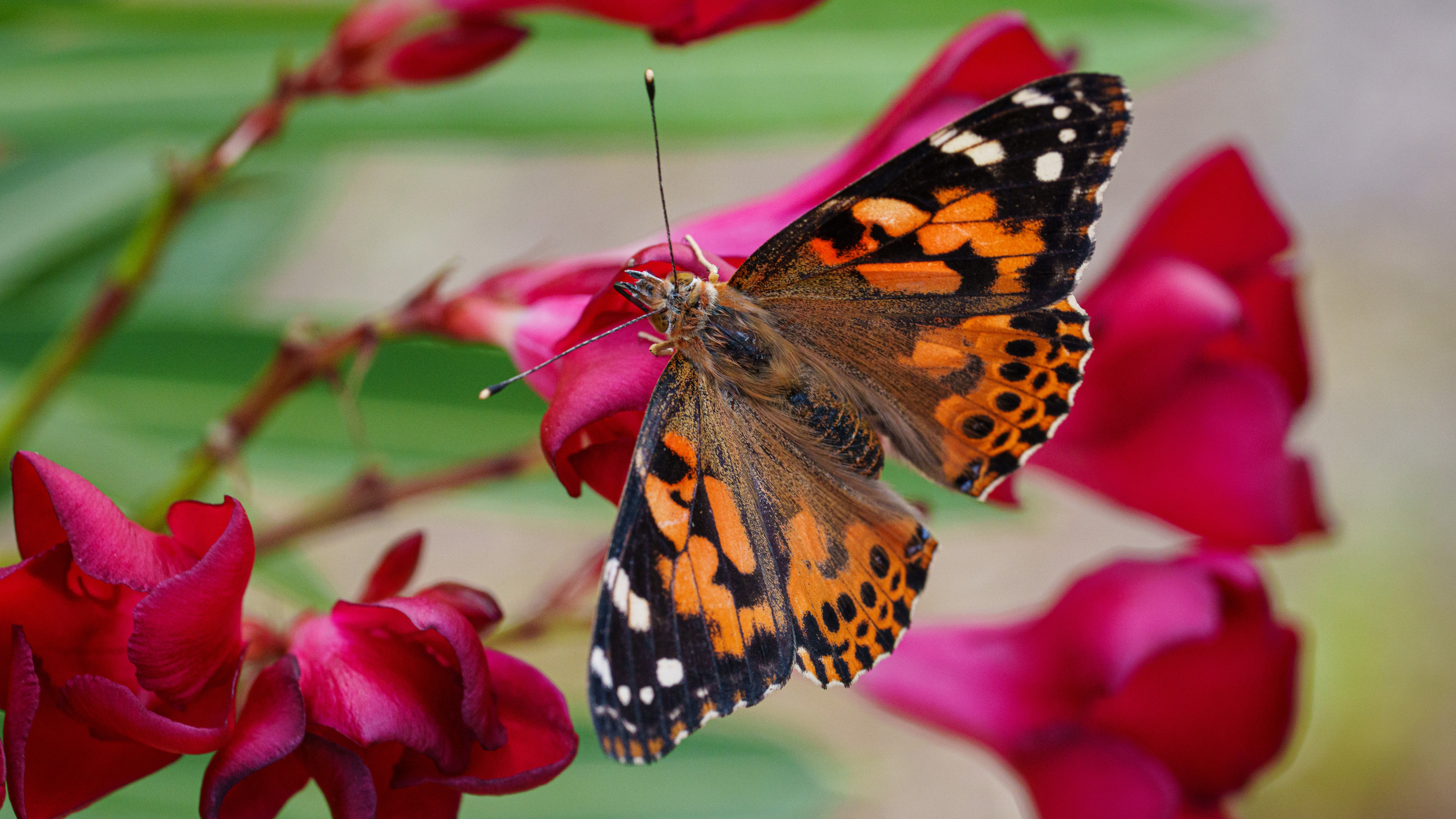Butterflies cross Atlantic ocean on 2,600-mile non-stop flight never recorded in any insect before
Painted lady butterflies discovered in French Guiana — thousands of miles from their usual habitats — got there through a Herculean transoceanic flight.

Scientists have found the first evidence of insects crossing an entire ocean — after finding butterflies that made a 2,600-mile (4,200 kilometers) journey across the Atlantic.
Gerard Talavera, an evolutionary biologist at the Botanical Institute of Barcelona, made the discovery in French Guiana in 2013, when he spotted a flock of painted lady butterflies (Vanessa cardui) sitting on the sand, their wings tattered and shot through with holes.
This discovery puzzled scientists, as the tiny species can be found around the world, but not in South America. Now, after a decade of investigation, the researchers have pieced together an answer for how the butterflies got there: They embarked on the first transoceanic flight recorded in an insect.
The researchers published their findings Tuesday (June 25) in the journal Nature Communications.
"We tend to see butterflies as a symbol of the fragility of beauty, but science shows us that they can perform incredible feats," study co-author Roger Vila, a researcher at the Institute of Evolutionary Biology in Barcelona, said in a statement. "There is still much to discover about their capabilities."
Insect migrations aren't uncommon, but they're difficult to track. Scientists usually rely on records from amateur insect watchers and radar coverage to study insect movements, but these are limited and not always reliable.
Related: 'Russian doll' set of stomach-bursting parasites released inside butterfly on remote Finnish island
Get the world’s most fascinating discoveries delivered straight to your inbox.
To work out how the painted lady butterflies got to French Guiana, the researchers pulled together multiple strands of evidence. They sequenced the butterflies' genomes, which revealed that they were closely related to populations in Europe and Africa. The team also analyzed pollen DNA on the insects' 2-inch-long (5 centimeters) bodies and identified two plant species only found in tropical Africa. In addition, they studied isotopes of hydrogen and strontium on the butterflies' wings, finding that they were unique to western Europe.
Taken together, this evidence ruled out a North American origin for the insects and suggested that their lives began in Africa or Europe.
"The painted lady butterflies reached South America from West Africa, flying at least 4,200 km over the Atlantic. But their journey could have been even longer, starting in Europe and passing through three continents, implying a migration of 7,000 km [4,350 miles] or more," study co-author Clément Bataille, a professor of earth and environment science at the University of Ottawa in Canada, said in the statement. "This is an extraordinary feat for such a small insect."
Painted lady butterflies are already known to migrate up to 9,000 miles (14,500 km) between Europe and Africa, including crossing the unforgiving expanse of the Sahara.
But this trip is made with nightly stops to rest and refuel. To reach French Guiana from West Africa, the butterflies would have to fly for up to eight days without rest.
To resolve this part of the mystery, the scientists analyzed wind currents that rise from the Sahara and blow dust from Africa to the Americas. They found that by gliding upon these aerial highways, the butterflies could complete their remarkable journey.
"The butterflies could only have completed this flight using a strategy alternating between minimal effort to avoid falling into the sea, facilitated by ascending winds, and active flight, which requires more energy consumption," study co-author Eric Toro-Delgado, a doctoral student at the Institute of Evolutionary Biology, said in the statement. "We estimate that without wind, the butterflies could have flown a maximum of 780 km [485 miles] before exhausting all their fat and thus their energy."
The finding highlights insects' abilities to traverse huge distances in ways scientists previously haven't considered.
"This discovery opens new perspectives on the capabilities of insects to disperse over long distances, even across seas and oceans. It is possible that we are underestimating the frequency and impact of these movements on our ecosystems," study lead-author Talavera said in the statement. "Throughout history, migratory phenomena have been important in defining the distributions of species that we observe today."

Ben Turner is a U.K. based writer and editor at Live Science. He covers physics and astronomy, tech and climate change. He graduated from University College London with a degree in particle physics before training as a journalist. When he's not writing, Ben enjoys reading literature, playing the guitar and embarrassing himself with chess.


